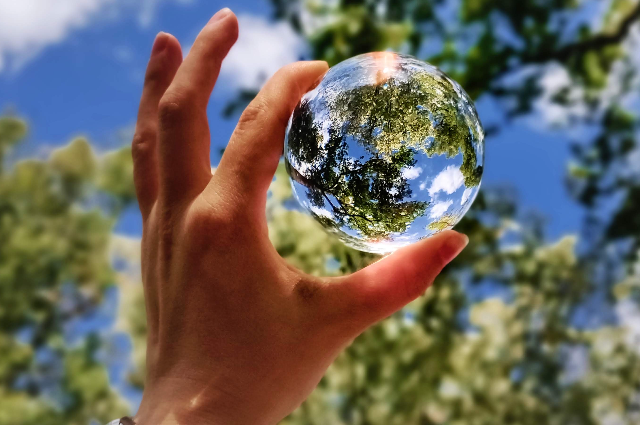
After years of incessant evolution and continuous succession, Homo sapiens, the most intelligent species are eventually treading on the planet Earth. We know how to harness natural resources, flourish extensively and acclimatize to unfavorable conditions. From the Tundra to the scorching Sahara Desert, from the rainfall-prone Northeast India to the dry Atacama Desert, we inhibit and thrive in all biomes. We have high resilience to catastrophes, and we are utilizing the resources for our welfare and prosperity. But the question is are we channelizing our precious resources wisely?
This is undoubtedly true that our existence is largely dependent on the resources that nature has bestowed upon us. Early men prospered right in the lap of nature. Their food consumption included plants and later raw flesh too until our ancestor Homo erectus likely began the controlled use of fire during the Stone Age or Paleolithic era. The fire arose from events like lightning or rubbing two stones together. A revolutionary discovery! Fire provided them with warmth, and protection from wild atrocious animals and had usage in cooking meat. This led to the realization of how a source of energy could transform and shape our lives for good.
The sun is the ultimate source of energy on the earth. The earliest forms of energy included solar energy and wind power. It is ironic how we are exploring them now in technologically more advanced ways.
The sun not only maintained the diurnal rhythms of biotic entities since the dawn of time but also largely controlled their behavior, foraging patterns, reproductive cycles, and lifestyles. It maintains the temperature of 15°C on earth which is optimum for life to grow. In early civilizations, people explored wind and hydro power to run basic mills. Wood logs were burnt extensively to produce the required heat and energy.
It was in the 1700s that the Englishmen found that coal, a mineral found on sedimentary rocks, was an efficient fuel. It burnt clearly and produced more amount of heat than wood charcoal. There had been previous localized discoveries of coal, the Chinese are supposed to have used coal about 3000 years ago, and French explorers discovered coal on the coasts of River Illinois. The discovery of petroleum is another remarkable event. In 1859, Edwin Drake drilled the first oil well in Pennsylvania but it’s notable that the discovery of petroleum, like coal, dates back thousands of years. Chinese used petroleum 2000 years ago. Later in the 9th century, the oil fields of Azerbaijan were explored. Thus, gradually, these fossil fuels took up the world by storm.
Fossil fuel is a mineral that mostly constitutes of hydrocarbons, which is formed naturally when the dead remains of plants and animals are sedimented within the layers of the crust. Under the immense pressure of the upper layers and high temperature from the core of the earth, these remains form fossil fuels. These fuels are efficient sources of energy, as they burn more efficiently than wood charcoal and produce a large amount of heat which can be channeled into various areas.
As the use of fossil fuels spiked, it propelled the growth of large-scale factories, and the manufacture of goods became handy. This was the 1760s when the Industrial Revolution began in England. This marked a transition from the handicraft and small-scale industries to machine manufacturing on an extensive scale. But every action has its repercussions. As the Western world was pioneering, the developing countries suffered, pollution grew at an alarming rate in the industrialized zones, and fossil fuels began depleting at an exaggerated rate. It continued for quite some time, and the world witnessed two deathly World Wars.
The consequences of the monstrously growing pollution eventually shook the conscience of the blindfolded man. The realization that possibly we would not be able to bestow our future generations the resources implicit for their survival, caused a stir. The ongoing accelerated use of resources would lead to their exhaustion, and many countries in the absence of energy sources may end in widespread unemployment, the vicious cycle of impoverishment, and environmental degradation. The environmental health is deteriorating in terms of climate change, sea-level rise, plastic pollution, ocean acidification, chemical pollution, and biodiversity loss. The only way out of the chaotic and unhealthy life patterns was — sustainable development.
It was in 1987, that the Brundtland Report had an apt definition for sustainable development. It refers to the idea that human societies should utilize their natural resources and ecosystem services prudently, so that there is no early shortage resulting in crisis, every country can sustain itself by fulfilling its amenities and future generations have enough to facilitate their survival.

United Nations Conference on Environment and Development in Rio de Janeiro, Brazil in 1992 was based on the concept of sustainable development. It was a maiden global attempt that put forth the undeniable significance of sustainable pattern of development. Earlier, the Brundtland report had investigated how human activities are affecting the planet negativity and adversely. The World Summit on sustainable development was held in Johannesburg, South Africa in 2002. The event was graced by 191 national delegates, various agencies of United Nations and several notable groups. This summit ended up with a joint commitment of the attendees toward sustainable consumption and production of resources.
Our India is a mega biodiverse country that with the occupation of just 2.4 percent of the world land surface area shares an impressive 8.1 percent of the biodiversity. Out of the 36 biodiversity hotspots in the world, 4 are present in India, namely, the Himalayas, the Western Ghats, the Indo-Burma region, and the Sundaland. These hotspots sustain numerous endemic species, thus making India rank among the top ten most species-rich countries. India’s major mineral resources include coal, iron ore, manganese ore, mica, bauxite, chromite, natural gas, diamonds, limestone, and thorium. Overall, India produces over ninety different types of minerals. India has a fair share of oil reserves too.

Therefore, the concept of sustainable development is way more in a country like ours. India gave effect to the provisions of the Convention on Biological Diversity held in Rio de Janeiro by enacting the Biological Diversity Act in the year 2002. It was one of the first few countries to legislate in this regard. The main principles of sustainability comprise economic growth, social development, and protection and conservation of the environment.
The resources are broadly classified into:
- Renewable or non-conventional resource
- Non-renewable or conventional resource
As the name suggests non-renewable resources are the ones that would deplete with time, as the rate of consumption easily outpaces the rate of their replacement. This includes coal, petroleum and natural gas. They are readily available, convenient to use, and affordable. The disadvantages include the emission of hydrocarbons and gases like carbon monoxide and carbon dioxide which pollute the atmospheric air. Moreover, even though these are available to us, once exhausted renewing them easily is not feasible. It takes thousands of years and extremes of temperature and pressure for plant and animal fossils to convert into coal and petroleum, respectively.
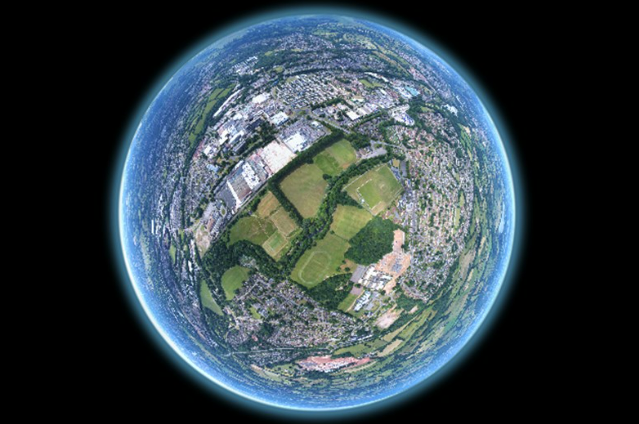
Ecology and environmental science often use the term, carrying capacity. This refers to the number of people that can be supported by the environment in which they are living without degrading it or the rest of the ecosystem. For every change we make, negative or positive, nature has to regenerate itself to sustain us. This is a natural balance, it is not only imperative for, but also for our upcoming generations and the various other species that cohabit this planet. The more adversely we affect nature, the more time it takes to reverse the change. So, if we impact the balance of nature less, we will face fewer repercussions like climate change.
- Climate change includes global warming, environmental pollution, a rise in the average annual temperature of the earth, and an upsurge in the sea level. This has resulted in frequent forest fires, an increase in the intensity of typhoons and hurricanes, adverse changes in weather patterns, and more drought-prone areas. Gases like carbon dioxide and methane are chief global warming gases as they trap the heat in the atmosphere thereby causing the temperature to rise significantly.
- Soil erosion and acidity are other alarming effect. Soil erosion usually happens due to wind and water but human activities are accelerating this process. Overgrazing by cattle, overcropping which leads to depletion in soil nutrients, and deforestation which results in loss of soil cover. The roots of trees and plants hold the soil but in their absence, the soil is subjected to wind and rainfall. The water logging in various crop fields ends up increasing the salts and ions in the soil referred to as soil acidity.
- Water scarcity refers to the lack of freshwater resources to meet the standard demand of drinkable and usable water and the water required for the ecosystems to function efficiently. The major reasons include water pollution, eutrophication, biomagnification, fertilizer pollution, hydrothermal pollution and sewage. The treatment of sewage is becoming necessary before releasing it in the water bodies, as the aquatic life is exposed to utter danger. As the food chain connects, humans being the tertiary consumers are prone to maximum hazards due to biomagnification.
- Atmospheric pollution is the hike in poisonous gases and suspended particulate matter in the atmospheric air. Hydrocarbons, oxides of sulphur and nitrogen, chlorofluorocarbons, tropospheric ozone and other gases in the atmosphere are hazardous to human health, animal ecosystem and plant growth. The industries and automobile exhausts are the main reasons behind this pollution.
- Ozone depletion is one of the biggest challenges of mankind. Ozone layer in the stratosphere absorbs the harmful ultraviolet rays of the sun and protects us from deadly diseases like skin cancer, glaucoma, retinal damage, etc. But over the past few years, due to the emission of a large number of chlorofluorocarbons and other ozone-depleting substances, the ozone layer is thinning. If we do not cut down the emission of such gases, our future generations will be exposed to life threatening diseases.
To tackle all the unprecedented catastrophic consequences, we are gradually relying more and more on the concept of sustainable development. Beginning with the use of renewable resources of energy, which refers to the resources that are not exhaustible or can be effectively renewed within a short period of time. Solar power, wind energy, tidal power, hydropower, and nuclear energy are the major examples.
- Solar power:
Sun is the ultimate source of energy for the earth. Almost all the ecosystems thriving on this planet derive their energy from the sun. Solar power refers to the energy of the sun that is converted into thermal or electrical energy. It is the cleanest and most abundant source of energy. Scientists have developed extraordinary technologies to harness solar energy for generating electricity, providing light or a comfortable interior environment, and heating water for various uses. The main ways to harvest solar energy are photovoltaics, solar heating and cooling and solar power. The solar cell is a simple semiconductor device that when exposed to optimum sunlight produces electrical energy. Solar panels installed on rooftops provide ample electrical energy. 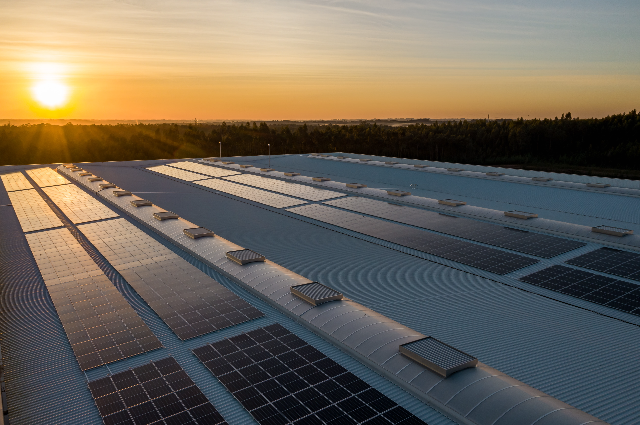
- Wind energy:
This is a sustainable and renewable source of energy where the kinetic energy of air currents is converted into electricity. A wind turbine is a device that converts wind energy into electricity using the aerodynamic force from the rotor blades. The rotor converts kinetic energy into mechanical energy which, by generator, is ultimately converted into electrical energy. Being an inexhaustible resource, it is rather a valuable investment for the future. The wind patterns and the climate of a region is thoroughly studied. And wind turbines are oriented in the direction of the winds. As this form does not involve the combustion of gases, it is clean and does not cause an increase in global warming.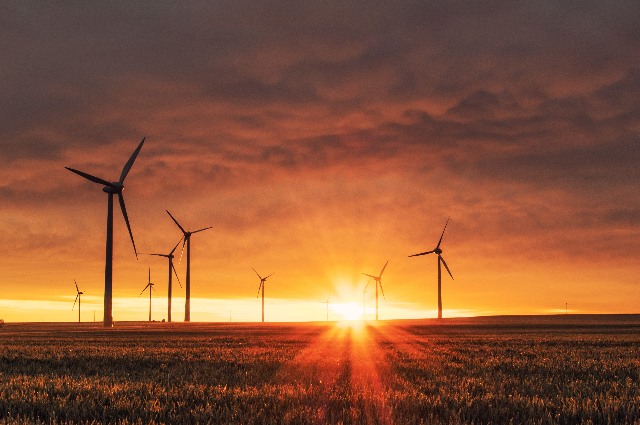
- Hydropower:
Hydropower is the energy generated by kinetic energy or gravitational potential of water. It is used in powering machines. Being a clean, sustainable resource, it is also renewable. Power is produced by using a dam or diversion structure to alter the natural flow of a river or other body of water. An elevation difference is created by the above-mentioned structures, and as the water falls on the turbine from a height, the energy of falling water is utilized in the production of power. Hydropower is an affordable source of electricity that costs less than most. Compared to other sources of electricity, hydropower also has relatively low costs throughout a full project lifetime in terms of maintenance, operations, and fuel. The longer lifespan and long-lasting pieces of equipment are the reasons why the hydropower projects tend to cost less. The eco-friendly safe and clean hydropower is being extensively and effectively harvested now.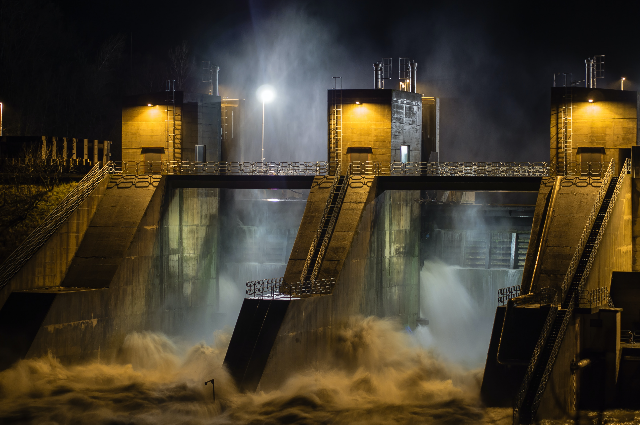
- Geothermal energy:
Geothermal energy occurs on the surface of the earth due to the conduction of heat from extremely hot core at the center of the earth. This heat manifests itself on the surface of the earth along the boundaries where the plate tectonics are colliding. Constructing geothermal power plants on the Earth’s tectonic fault lines is the way to harness the energy. Steam or high-pressure water is pumped out of geothermal vents. The steam is used to power the turbines. Cool water is injected Bach underground to replenish the source. This is another clean and continuous source of energy with no emissions. Although very advantageous, these vents are very location-specific and offsetting challenge. Possible toxic gas emissions must be controlled.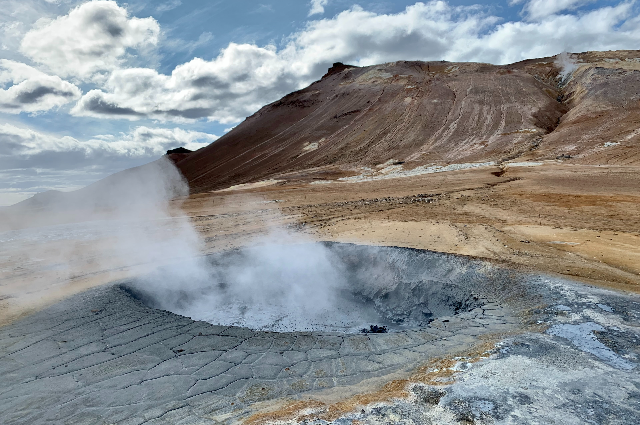
- Tidal power:
Tidal energy is harnessed by converting the energy of surge and currents in ocean waters into usable forms of energy, mostly electricity. Tidal turbines have blades that turn a rotor to power a generator. These turbines are mostly located in the sea floor. Tidal barrages or dams are constructed on the estuary of rivers too.- Nuclear power:
Radioactivity is the property of elements with unstable nuclei with results in spontaneous generation of particles like alpha particles, beta and gamma rays, accompanied by emission of a huge amount of energy. In a nuclear reactor, a controlled apparatus, the energy emitted is used for the conversion of water into steam, which eventually runs turbines resulting in the production of electricity. Although nuclear power is an efficient solution to mitigate the excessive use of thermal power using coal and petroleum, it demands a lot of care. Radioactive pollution is regarded as the deadliest form of environmental pollution so radioactive material like uranium and polonium must be handled with immense precision and care. Radioactive waste should be buried 500 m deep in the earth in a lead box. The accidents like Chernobyl Disaster remind us how dangerous could nuclear power be if not handled properly.Energy production must be accompanied by efficient energy storage. There are two types of batteries:
- Primary battery
- Secondary battery
Primary battery includes the single-use battery which once discharged is useless and has to be recycled it thrown away. On the other hand, secondary battery could be recharged repeatedly for many cycles. There is a wide range of batteries with different capabilities and properties. The popular one is the lead acid battery which is extensively used by us. The lithium-ion battery has a very successful lifetime, comprising of 3000 charge-discharge cycles. They have less discharge rate and low maintenance. Sodium Sulphur NAS batteries are another powerful alternative with 4500 charge-discharge cycles. These find use in large-scale utility energy storage. Then come, the vanadium flow batteries which are very effective for bulk energy storage and time-shifting.
Fuel cell:
A fuel cell is not an energy storage device rather it generates electricity. It works on the same principle as the true batteries. The electrolytes in a fuel cell are oxygen and hydrogen, two readily available harmless gases. Oxygen is obtained from the fractional distillation of air whereas hydrogen is obtained from methane or ammonia. The limiting factor of a fuel cell is hydrogen. The biggest advantage of this kind of cell is that the only product besides electrical energy is water. The long history of fuel cells suggest that it is a proven technology, both reliable and scalable. Moreover, as the by-product is a safe compound, it is safe for the environment. Fuel cells seem promising as a clean source of energy.Prudent use of mineral resources
The earth’s crust is a reservoir of innumerable varieties of minerals. A large amount of useful elements are extracted from these minerals. There are countless mineral deposits that provide us with elements like iron, aluminium, zinc, gold, silver, platinum, silicon and copper, a few to name. We must use these reserves wisely and rely more on recycling of elements so that our future generations do not face the shortage.
Sustainable world food systems
Sustainability is a major challenge that the world food system is facing. Sustainable development also includes large-scale food production so that the population does not have to face starvation caused due to famines and other calamities. We need to ensure that food production systems are sustainable and the implementation of resilient agricultural, plant and animal breeding techniques takes place. Bioremediation and bio-fortification are two significant corollaries. We need to ensure:
- Healthy and sustainable food profiles
- Food safety and security
- Continuous availability of food
- Proper use of agrochemicals and sustainable agricultural technologies
- Use of biological food webs to develop self-sustaining, highly productive food systems

Now let's look into the various reasons why this shift to sustainable energy is so imperative for us:
- Elimination of poverty and hunger is the need of the hour. Still many countries face prolonged phases of famines. Running out of resources, due to plenty of reasons like wars and natural catastrophes, is not uncommon, so sustainability is a highly anticipated concept that could deal with such unwelcomed conditions.
- The development of healthy societies with longevity, low mortality and high productivity is necessary for humans to thrive on this planet for longer periods. We also need to tackle gender inequality and distribute the opportunities for proper education and health to every human being.
- Maintaining sanitary conditions is significant to eliminate the probability of acquiring a disease which could be endemic or epidemic or isolated to an individual. The world saw a death toll in the Covid19 pandemic, we need to maintain sanitation to avoid the breakouts of such diseases because not only it affects our health, but also affects the economy and productivity on a larger scale.
- Availability of affordable clean energy to sustain industries and the work sectors that fulfill our needs, as well as the electricity generation for our homes and workplaces. Clean energy will mitigate the chances of environmental pollution thereby serving us a better lifestyle.
- The creation of sustainable communities would ensure a long-lasting presence of our species on the planet Earth. As human settlements interfere positively with natural ecosystems, sustainable systems are created. Biodiversity conservation, animal protection and afforestation are the ways to create such systems.
- Conservation of natural resources can be done by following the provisions of sustainability. By this, we will be able to use our resources efficiently as well as pass on better reserves to our future generations.
- World peace and strong institutions are necessary to prevent conflicts and wars that could drain our resources to nothingness.
Lastly, earth is our planet, our home. It is our moral responsibility to protect and safeguard the planet that lets us breath and thrive.
